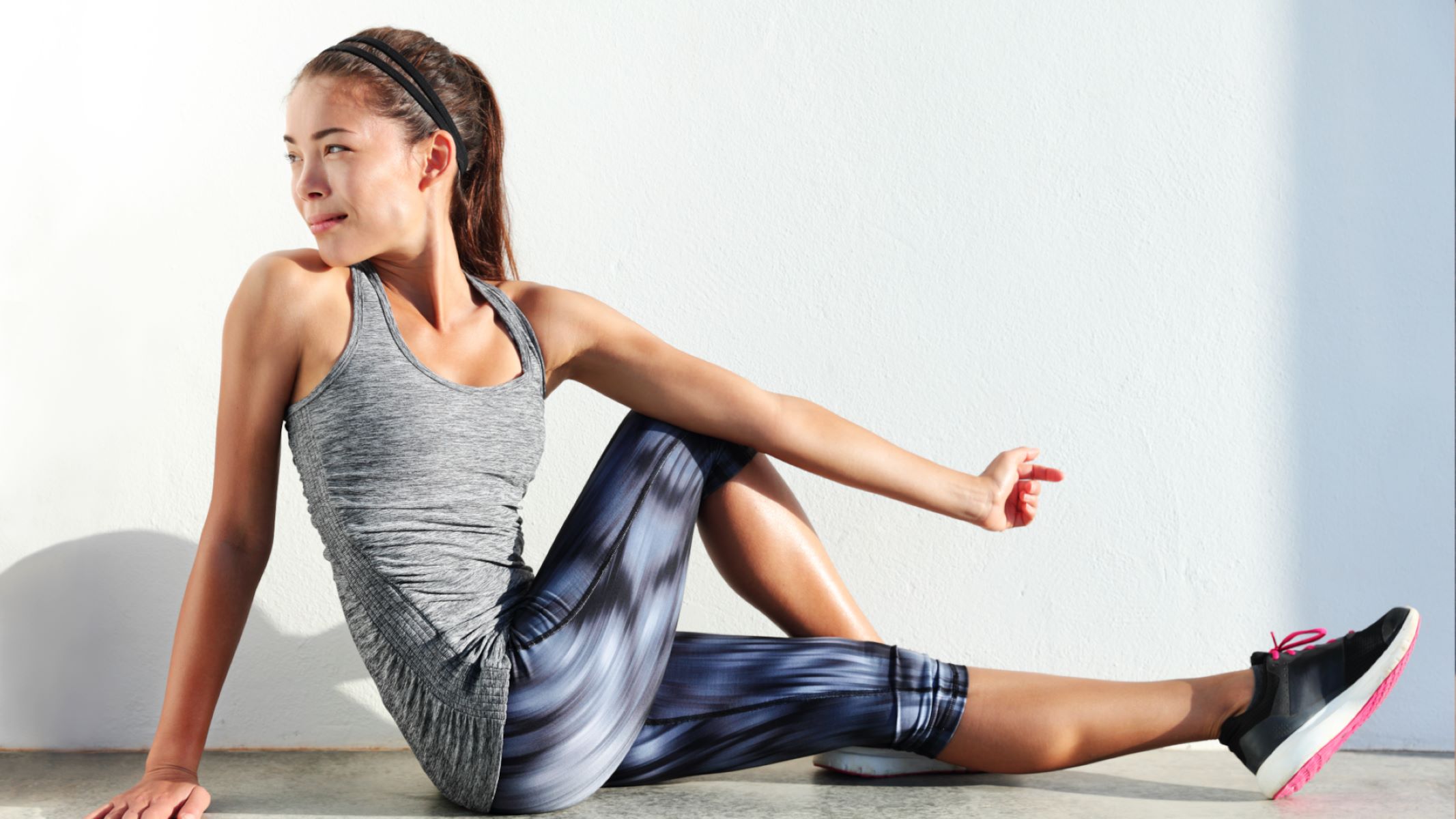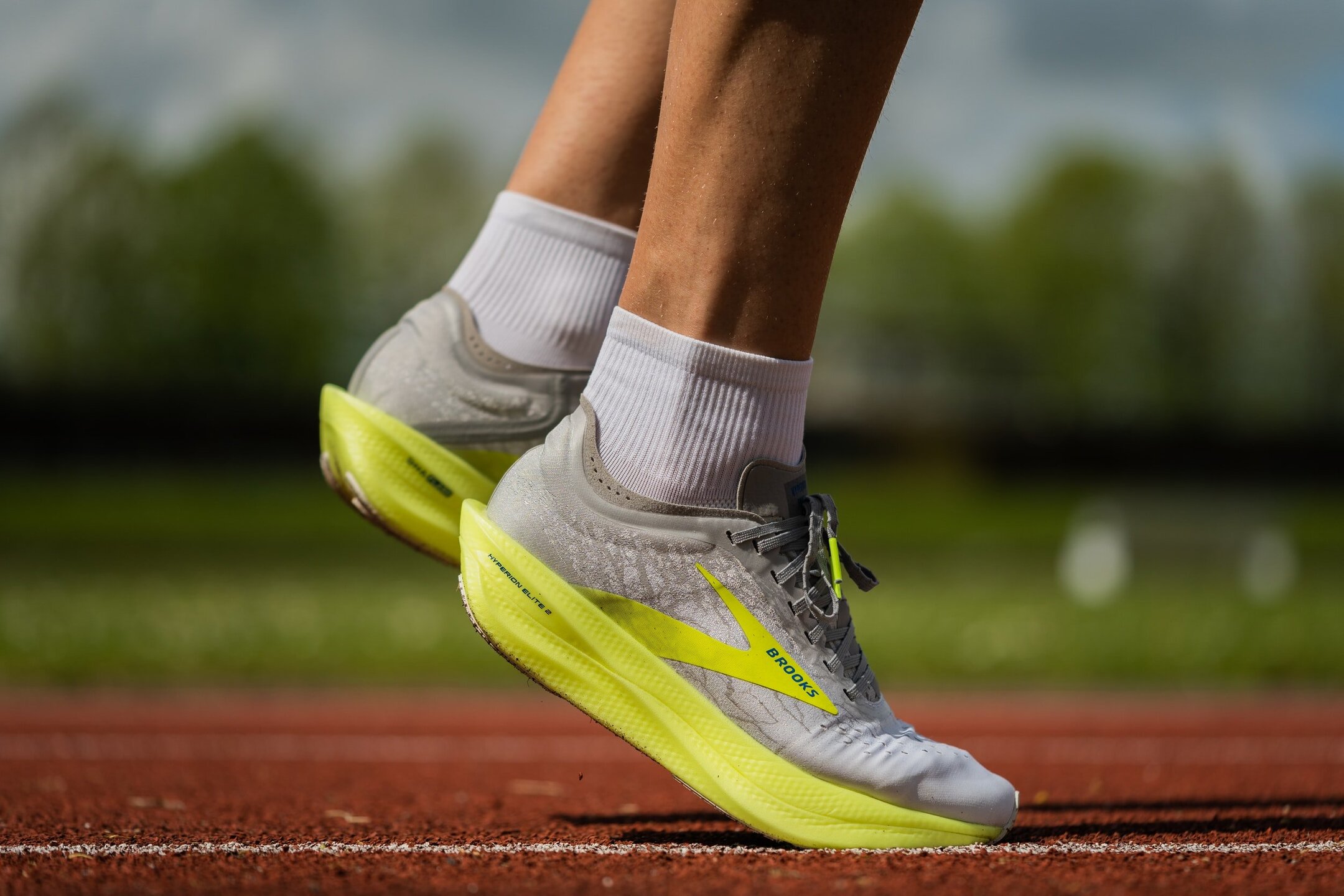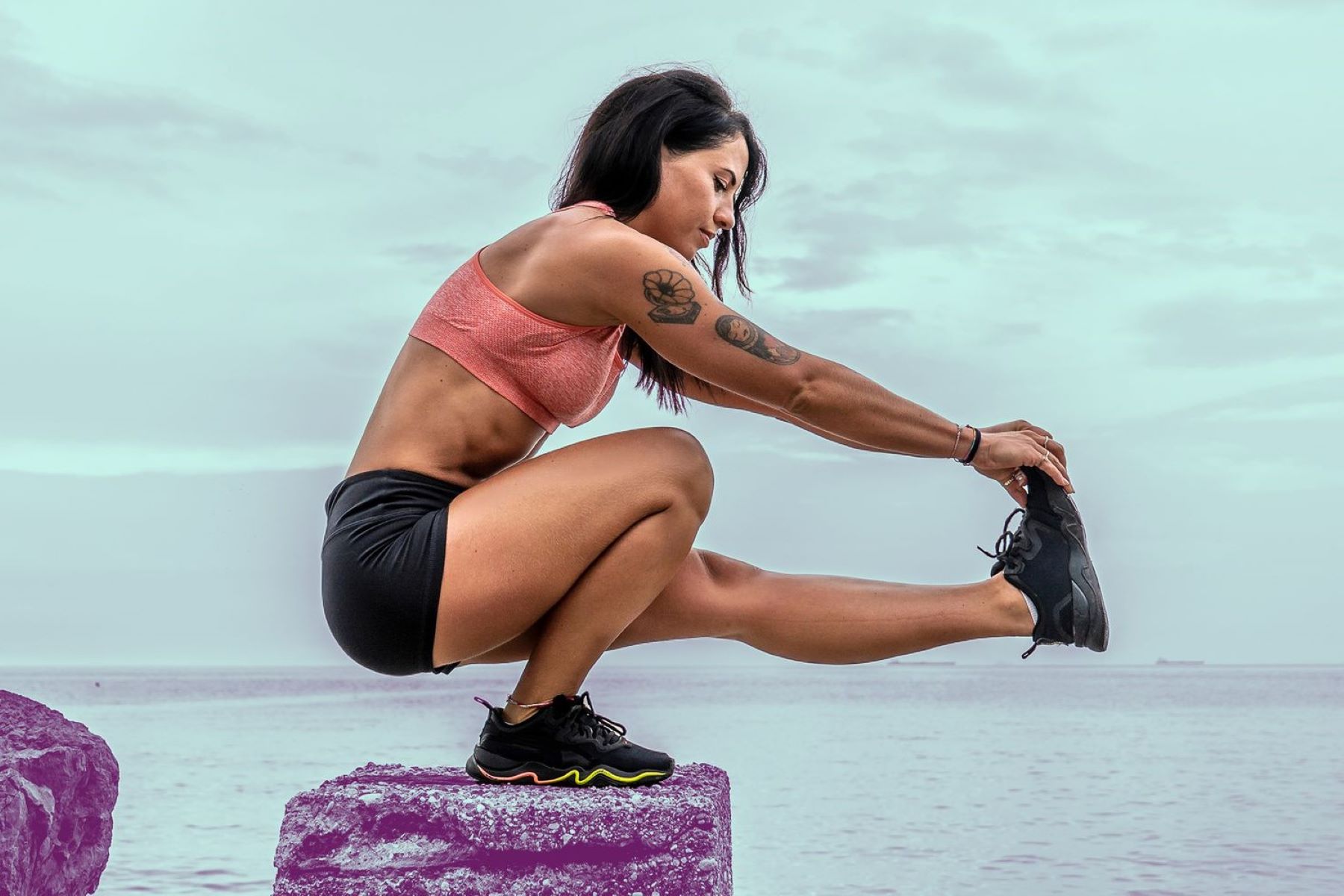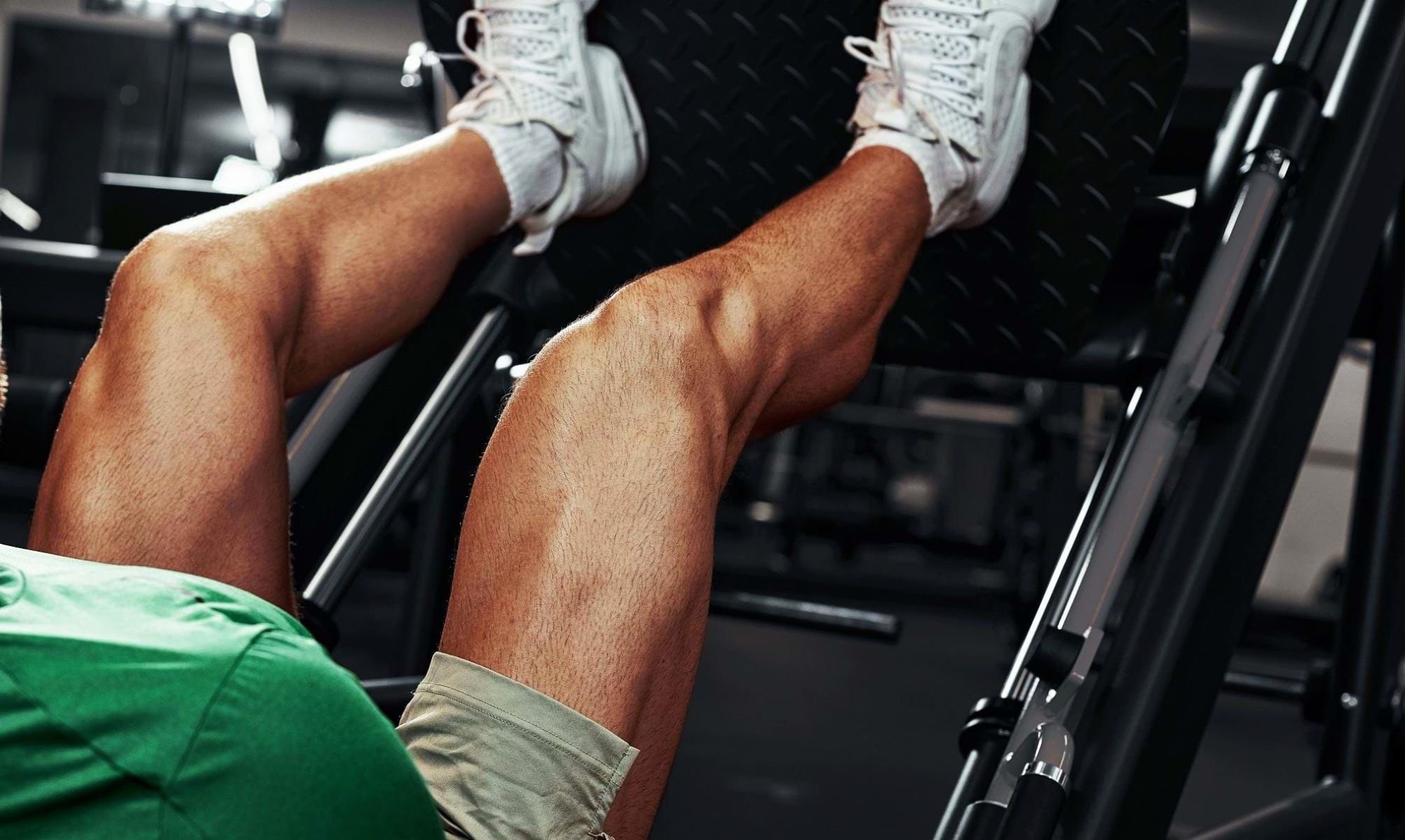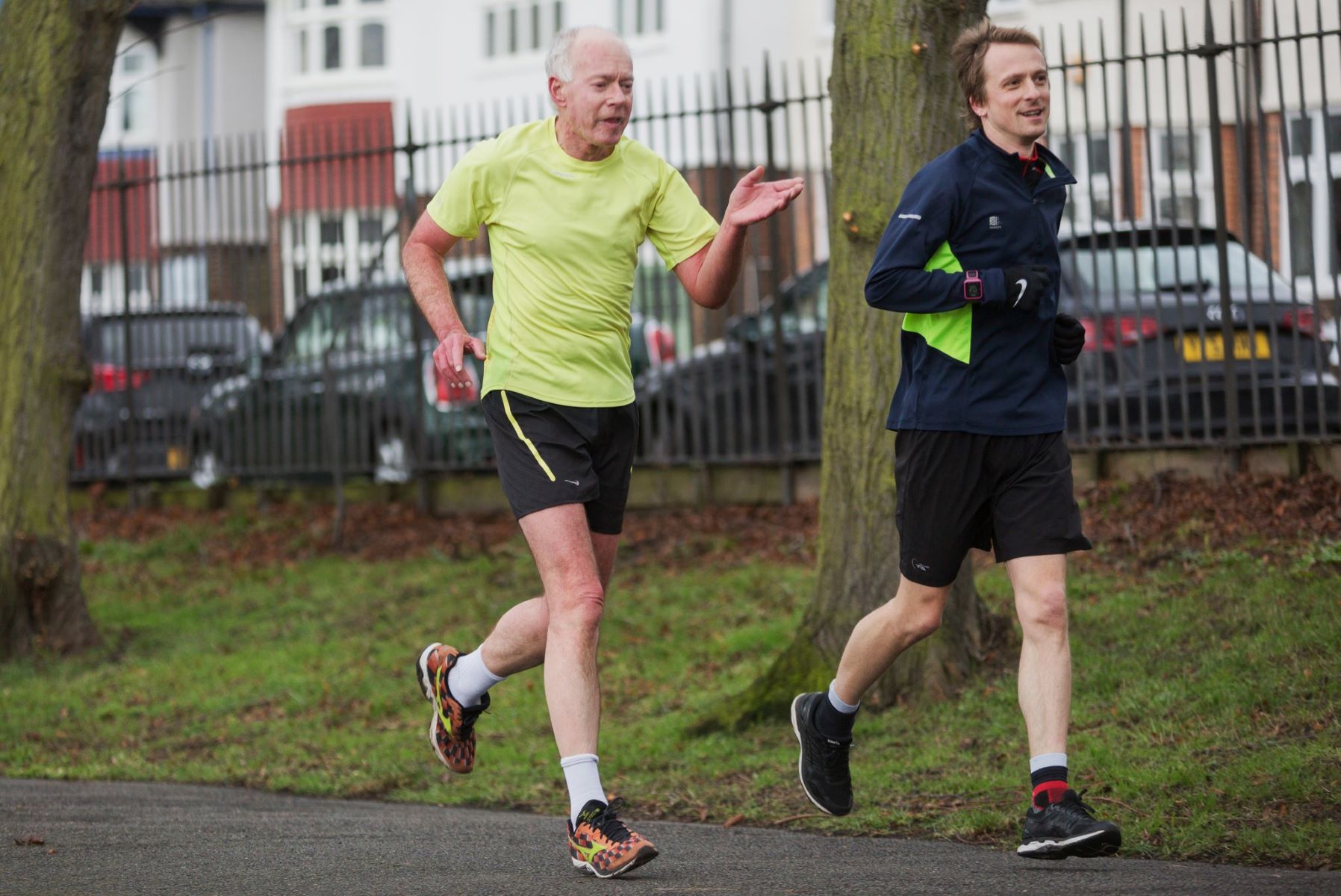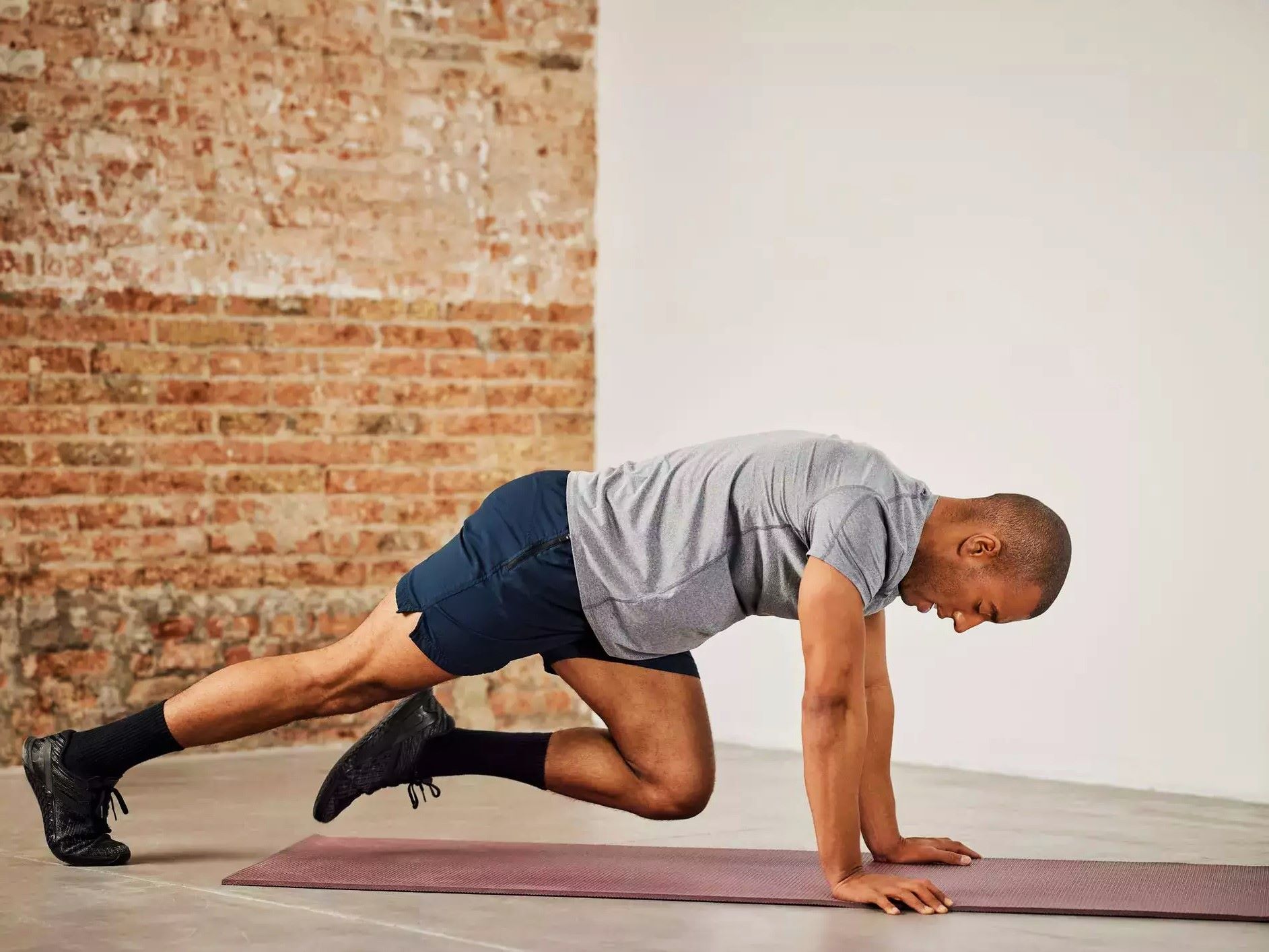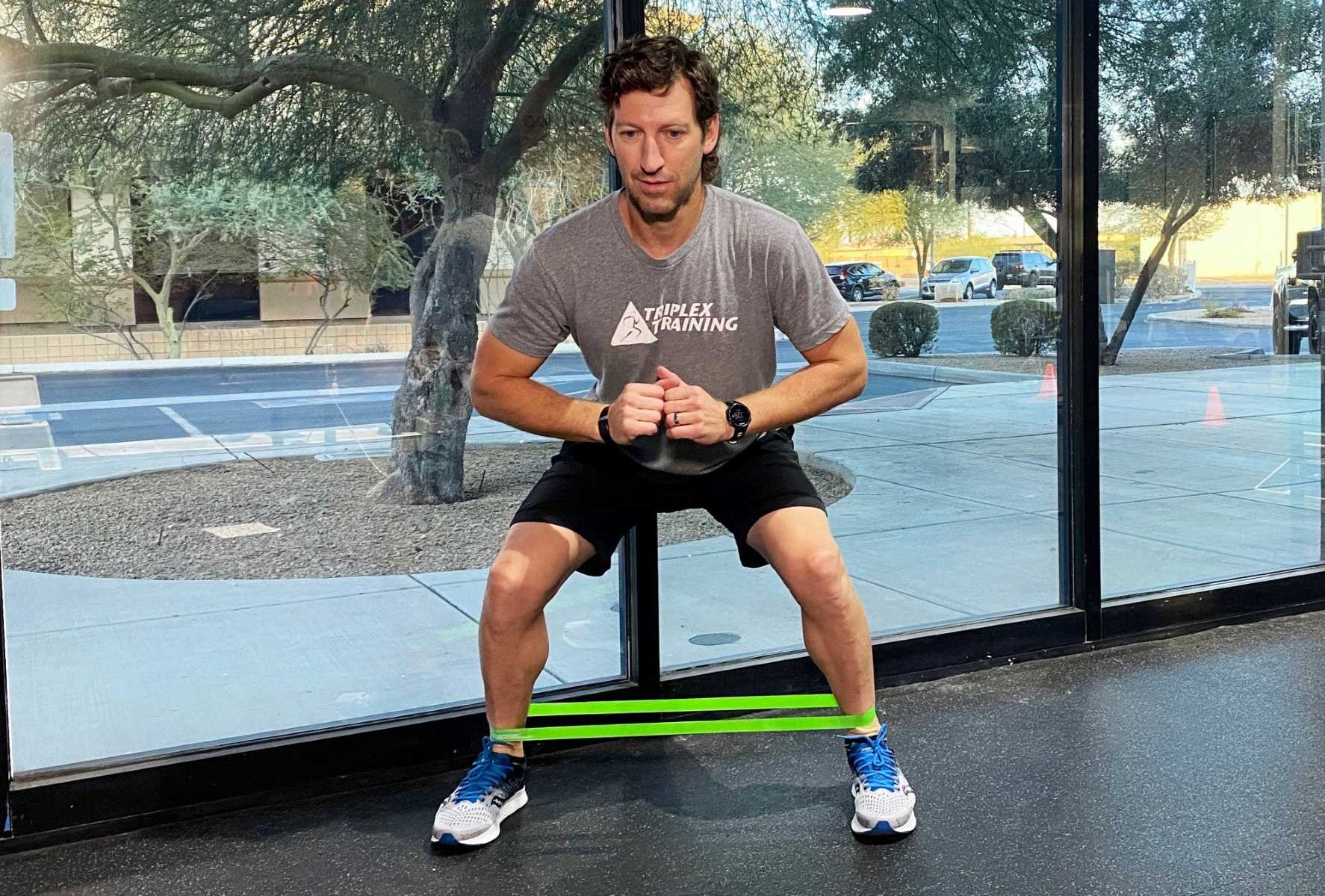Home>Training & Techniques>The Essential Exercise For Runners: Mastering The Squat
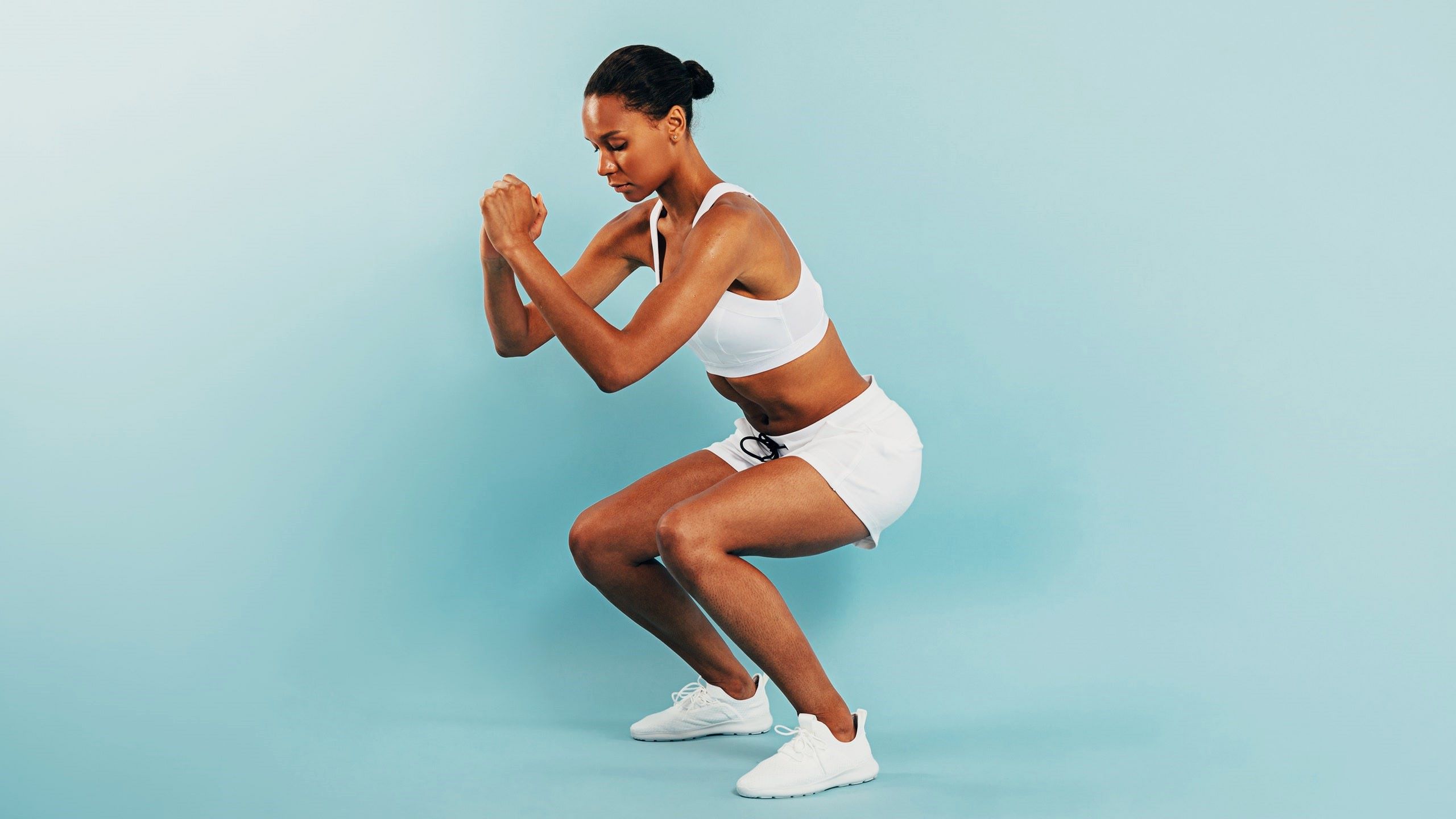

Training & Techniques
The Essential Exercise For Runners: Mastering The Squat
Published: March 1, 2024
Improve your running performance with expert tips on mastering the squat. Discover essential training and techniques for runners.
(Many of the links in this article redirect to a specific reviewed product. Your purchase of these products through affiliate links helps to generate commission for Therunningadvisor.com, at no extra cost. Learn more)
Table of Contents
Understanding the Benefits of Squats for Runners
Squats are a fundamental exercise that offers a myriad of benefits for runners. Whether you're a seasoned marathoner or a novice jogger, incorporating squats into your training regimen can significantly enhance your running performance and overall fitness. Here's a closer look at the remarkable advantages of squats for runners:
-
Strengthens Lower Body Muscles: Squats primarily target the quadriceps, hamstrings, glutes, and calves, which are crucial for generating power and propulsion during running. By strengthening these muscle groups, squats help improve running efficiency and reduce the risk of injuries.
-
Enhances Stability and Balance: Running requires a strong and stable lower body to withstand the impact of each stride. Squats engage the core and stabilizing muscles, promoting better balance and coordination, which are essential for maintaining proper running form and preventing imbalances.
-
Boosts Speed and Endurance: The explosive nature of squats helps develop fast-twitch muscle fibers, which are vital for sprinting and maintaining speed during long-distance runs. Additionally, the increased muscular endurance gained from squats can delay the onset of fatigue during extended running sessions.
-
Improves Joint Health: Proper squatting technique promotes better joint mobility and strengthens the ligaments and tendons around the knees and hips. This can contribute to reducing the risk of common running-related injuries, such as IT band syndrome and patellofemoral pain syndrome.
-
Enhances Proprioception: Squats engage proprioceptive receptors in the muscles and joints, heightening body awareness and spatial orientation. This can translate to improved running mechanics, as runners become more attuned to their body's positioning and movement patterns.
-
Aids in Injury Prevention and Rehabilitation: Weaknesses or muscle imbalances in the lower body can predispose runners to various injuries. Squats help address these issues by fortifying the muscles and correcting asymmetries, thereby reducing the likelihood of overuse injuries and expediting the recovery process for existing injuries.
Incorporating squats into your training routine can yield substantial benefits for runners of all levels. Whether you're aiming to improve your speed, endurance, or overall running performance, mastering the squat can be a game-changer in your fitness journey.
Proper Form and Technique for Performing Squats
Performing squats with proper form and technique is essential to maximize their benefits and minimize the risk of injury. Here's a detailed guide on mastering the correct execution of squats:
Body Positioning
- Feet Placement: Stand with your feet shoulder-width apart, ensuring that your weight is evenly distributed across the entire foot. Toes can be slightly turned out to accommodate natural hip alignment.
- Spine Alignment: Maintain a neutral spine throughout the movement, avoiding excessive arching or rounding of the back. Engage the core to stabilize the spine and prevent overarching of the lower back.
- Head Position: Keep your head in a neutral position, looking straight ahead or slightly upward. Avoid craning the neck forward or looking downward, as this can compromise spinal alignment.
Execution
- Initiating the Descent: Begin the movement by hinging at the hips and pushing the buttocks back as if sitting into an imaginary chair. Simultaneously, bend the knees and lower the body while keeping the chest lifted and the back straight.
- Depth of Squat: Descend until the thighs are parallel to the ground or slightly below, ensuring that the knees track in line with the toes and do not collapse inward. Aim to achieve a full range of motion without compromising form.
- Driving through the Heels: As you ascend from the squat, focus on driving through the heels to engage the glutes and hamstrings effectively. This helps maintain balance and stability while preventing excessive pressure on the knees.
Breathing Technique
- Inhalation: Inhale deeply before initiating the descent, expanding the chest and engaging the core to provide stability.
- Exhalation: Exhale as you ascend from the squat, maintaining a steady breathing rhythm to support the exertion of effort and enhance overall performance.
Common Mistakes to Avoid
- Knee Overextension: Avoid locking out the knees at the top of the movement to prevent unnecessary strain on the joint.
- Forward Lean: Refrain from leaning excessively forward, as this can place undue stress on the lower back and compromise proper muscle engagement.
- Rounding of the Back: Maintain a strong and stable back position throughout the squat, avoiding rounding or overarching of the spine to prevent injury.
Incorporating Proper Form into Your Routine
Consistently practicing squats with proper form and technique is crucial for reaping their full benefits. Whether you're performing bodyweight squats, goblet squats, or barbell squats, prioritizing correct form will enhance muscle activation, reduce the risk of injury, and optimize the effectiveness of the exercise.
Mastering the proper form and technique for performing squats is a foundational aspect of any strength training or running program. By paying close attention to body positioning, execution, breathing technique, and common mistakes to avoid, individuals can elevate their squatting proficiency and unlock the immense potential of this dynamic exercise.
Variations of Squats to Target Different Muscle Groups
Squats are a versatile exercise with numerous variations that allow runners to target specific muscle groups and add diversity to their training routine. By incorporating different squat variations, runners can effectively engage various muscles, enhance overall strength, and prevent workout monotony. Here are some popular squat variations tailored to target different muscle groups:
1. Front Squats
Front squats place a greater emphasis on the quadriceps and core muscles while also engaging the glutes and hamstrings. In this variation, the barbell is positioned across the front of the shoulders, requiring an upright torso and increased core stability. By shifting the load to the front of the body, front squats promote an extended range of motion and help runners develop stronger quadriceps, which are essential for powerful strides and uphill running.
Read more: 3 Essential Hip Flexor Exercises For Runners
2. Sumo Squats
Sumo squats, characterized by a wide stance and turned-out toes, primarily target the inner thighs (adductors) and glutes. This variation places less stress on the knees and emphasizes hip abduction, making it an effective exercise for improving hip strength and stability. Sumo squats can benefit runners by addressing muscle imbalances and enhancing lateral movement mechanics, ultimately contributing to better overall running performance.
3. Overhead Squats
Overhead squats are a challenging variation that demands significant shoulder mobility and core strength. By holding a barbell or a weighted object overhead while performing squats, runners engage the entire body, including the shoulders, upper back, and core, in addition to the lower body muscles. Overhead squats promote improved posture, balance, and full-body coordination, making them a valuable exercise for runners seeking to enhance overall functional strength and stability.
4. Single-Leg Squats (Pistols)
Single-leg squats, also known as pistols, are an advanced variation that targets unilateral leg strength and stability. By performing squats on a single leg, runners can address muscle imbalances and enhance proprioception while engaging the quadriceps, hamstrings, and glutes to a greater extent. Single-leg squats are particularly beneficial for runners as they mimic the unilateral nature of running, promoting better balance and reducing the risk of asymmetrical strength development.
5. Jump Squats
Jump squats are a dynamic plyometric variation that focuses on explosive power and fast-twitch muscle activation. By incorporating a powerful jump at the end of each squat, runners can enhance their lower body explosiveness, agility, and overall athletic performance. Jump squats effectively engage the quadriceps, glutes, and calves while also improving cardiovascular conditioning, making them a valuable addition to any runner's training regimen.
Incorporating these squat variations into a comprehensive training program can help runners target specific muscle groups, improve overall strength, and enhance running performance. By strategically integrating diverse squat variations, runners can achieve a well-rounded and balanced approach to lower body strength development, ultimately contributing to improved running efficiency and reduced risk of injuries.
Read more: The Importance Of Jump Squats For Runners
Incorporating Squats into Your Running Training Program
Integrating squats into your running training program can yield remarkable benefits, enhancing your overall performance and reducing the risk of injuries. By strategically incorporating squats, runners can target specific muscle groups, improve strength, and optimize their running mechanics. Here's a comprehensive guide on seamlessly integrating squats into your running training program:
Periodization and Frequency
To effectively integrate squats into your running training, it's essential to establish a periodized approach that aligns with your running schedule. Incorporating squat sessions 2-3 times per week, with adequate rest between sessions, allows for optimal muscle recovery and adaptation. By integrating squats into your strength training regimen, runners can progressively build lower body strength and endurance, complementing their running workouts.
Alignment with Running Phases
Aligning squat training with different phases of your running program is crucial. During the off-season or base-building phase, focus on developing foundational strength through squats to lay a solid groundwork for more intense training periods. As you transition to the pre-competition and competition phases, adjust the intensity and volume of squats to complement your running workouts and prevent interference with running performance.
Complementary Training
Incorporating squats alongside complementary strength and mobility exercises can further enhance their impact on running performance. Exercises such as lunges, deadlifts, and plyometric drills can synergistically support the benefits of squats, promoting balanced muscle development, improved running economy, and reduced injury risk. Additionally, integrating mobility drills and foam rolling into your routine can aid in maintaining optimal joint mobility and muscle flexibility, complementing the effects of squats on overall running mechanics.
Progressive Overload and Variation
Progressive overload is key to reaping the full benefits of squats. Gradually increasing the resistance, volume, or intensity of squats over time challenges the muscles and promotes continuous adaptation and growth. Additionally, incorporating various squat variations, such as front squats, sumo squats, and single-leg squats, can target different muscle groups and prevent training plateaus, ensuring comprehensive lower body development.
Recovery and Regeneration
Balancing squat training with adequate recovery and regeneration strategies is essential for optimizing running performance. Incorporating rest days, active recovery sessions, and proper nutrition supports muscle repair and adaptation, allowing runners to derive maximum benefits from squat training while minimizing the risk of overtraining and fatigue.
By thoughtfully integrating squats into your running training program and aligning them with your running phases, complementary exercises, and recovery strategies, you can harness the transformative power of squats to elevate your running performance and achieve your fitness goals.
Common Mistakes to Avoid When Doing Squats
Mastering the squat exercise involves not only understanding the proper form and technique but also being mindful of common mistakes that can compromise its effectiveness and lead to potential injury. By recognizing and addressing these pitfalls, individuals can optimize their squatting performance and minimize the risk of adverse outcomes. Here are key mistakes to avoid when performing squats:
1. Poor Alignment and Posture
Maintaining proper alignment and posture throughout the squat is paramount. Common errors include allowing the knees to collapse inward, which can strain the knee joints, and rounding the back, which increases the risk of spinal injury. It's essential to ensure that the knees track in line with the toes and the spine remains neutral, with the chest lifted and the core engaged to support a stable and aligned position.
2. Inadequate Depth and Range of Motion
Failing to achieve adequate depth during squats can limit the engagement of targeted muscle groups and compromise the exercise's effectiveness. Conversely, excessively deep squats can place undue stress on the knees and lower back. Striking a balance by descending to a comfortable depth, ideally until the thighs are parallel to the ground, allows for optimal muscle activation while minimizing the risk of injury.
3. Incorrect Weight Distribution
Improper weight distribution, such as leaning too far forward or shifting the weight onto the toes, can destabilize the squat and place excessive strain on the knees and lower back. It's crucial to distribute the weight evenly across the entire foot, with a focus on driving through the heels during the ascent to effectively engage the glutes and hamstrings while maintaining balance and stability.
4. Breath Holding
Neglecting proper breathing technique during squats can impede performance and compromise safety. Holding the breath during the descent and ascent of the squat increases intra-abdominal pressure, which can elevate the risk of dizziness and diminish overall stability. Instead, maintaining a steady breathing rhythm by inhaling before descending and exhaling during the ascent supports optimal oxygenation and enhances muscular control.
5. Overexertion and Fatigue
Pushing beyond one's physical limits or performing squats to the point of muscular fatigue can lead to compromised form and increased susceptibility to injury. It's essential to recognize individual thresholds and avoid overexertion, allowing for adequate rest and recovery between squat sessions to facilitate muscle adaptation and minimize the risk of overuse injuries.
By being mindful of these common mistakes and actively working to correct them, individuals can elevate their squatting proficiency, reduce the likelihood of injury, and maximize the benefits of this foundational exercise in their training regimen.
Read more: The Essential 7 Strength Moves For Runners
Tips for Progressing and Mastering the Squat Exercise
Mastering the squat exercise is a continuous journey that requires dedication, patience, and a strategic approach to progression. Whether you're a beginner looking to build a strong foundation or an experienced athlete aiming to refine your squatting technique, implementing the following tips can significantly contribute to your mastery of this fundamental movement.
1. Gradual Progression
Progressing in the squat exercise should be approached incrementally to allow for adaptation and minimize the risk of injury. Begin with bodyweight squats to establish proper form and movement patterns before gradually introducing additional resistance. Incrementally increasing the load or intensity of squats over time ensures that the muscles adapt progressively, leading to sustainable strength gains and improved proficiency.
2. Focus on Form and Technique
Emphasizing proper form and technique is paramount to mastering the squat. Prioritize quality over quantity, ensuring that each repetition is executed with precision and control. Concentrate on maintaining alignment, depth, and stability throughout the movement, as this not only optimizes muscle engagement but also reduces the likelihood of injury. Video analysis or feedback from a qualified trainer can provide valuable insights into refining your squatting technique.
3. Mind-Muscle Connection
Developing a strong mind-muscle connection is instrumental in mastering the squat exercise. Concentrate on engaging the targeted muscle groups, particularly the quadriceps, hamstrings, and glutes, throughout the entire range of motion. Visualize the muscles at work and focus on contracting them effectively during both the descent and ascent of the squat. This heightened awareness fosters better muscle activation and control, leading to improved strength gains and movement efficiency.
Read more: Gear Review: Kinomap Trainer
4. Incorporate Variability
Introducing variability into your squat training regimen can prevent plateaus and enhance overall proficiency. Experiment with different squat variations, such as front squats, goblet squats, or Bulgarian split squats, to target specific muscle groups and challenge your body in new ways. Additionally, incorporating tempo variations, pauses, or unilateral movements can further diversify your squat training, promoting well-rounded strength development and movement adaptability.
5. Prioritize Mobility and Flexibility
Optimal mobility and flexibility are essential for mastering the squat exercise. Incorporating dynamic warm-up routines, mobility drills, and stretching exercises can enhance joint mobility, muscle flexibility, and overall movement quality. Addressing any mobility restrictions or muscle tightness can significantly improve squat performance and reduce the risk of compensatory movement patterns that may lead to injury.
6. Recovery and Regeneration
Balancing squat training with adequate recovery and regeneration strategies is crucial for long-term progression. Allow for sufficient rest between squat sessions to facilitate muscle repair and adaptation. Additionally, integrating foam rolling, massage, and mobility work can aid in alleviating muscle tension and promoting recovery, ensuring that you approach each squat session with optimal physical readiness.
By integrating these tips into your squat training regimen, you can embark on a journey of continuous improvement and mastery of this foundational exercise. Embrace the process, stay consistent, and celebrate the incremental progress as you work towards achieving your squatting goals.

